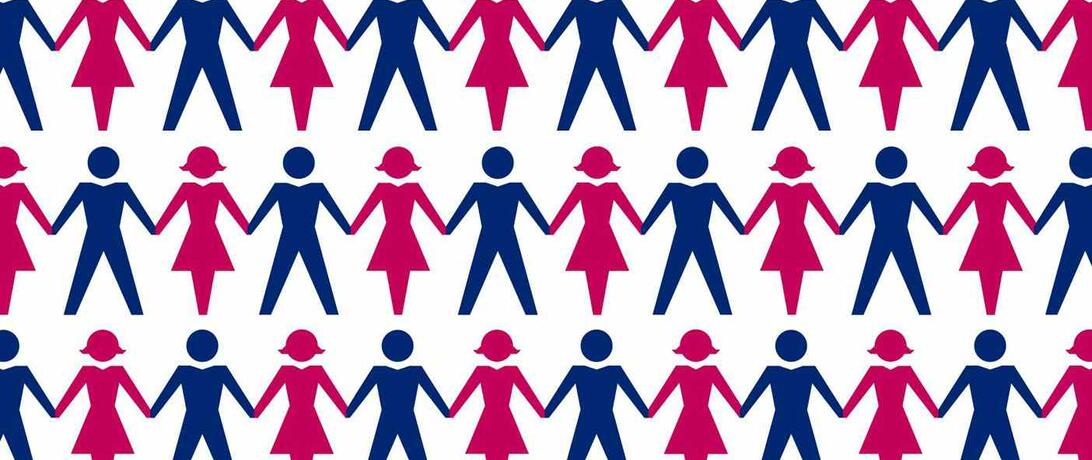
“Gender blindness” refers to the lack of awareness about how men and women are differently affected by a situation due to their different roles, needs, status and priorities in their societies.
Gender blindness can negatively impact the goals of peace and security operations, because a failure to take the differences between men and women into account leads to an incomplete understanding of the area of operation, the host-nation population, and the conflict in general. This results in ineffective rather than simply inequitable security operations.
Here are some examples of how gender blindness can impact the work of a peacekeeping mission in terms of disarmament, demobilization and reintegration, protection of civilians, and integrating women in peacekeeping missions.
1. The Impact of Gender Blindness on Disarmament, Demobilization and Reintegration (DDR)
DDR’s security objectives are to break the chain of command, and to disarm and demobilize fighting forces. A typical DDR operation exclusively targets male combatants for disarmament. This is because, in general, only male combatants control the weapons cache, so only male combatants are able to meet the UN requirements to turn in guns and ammunition. Since only the men can turn in the required number of weapons, only they will be registered with the UN and other multilateral agencies as beneficiaries of the reintegration effort. As beneficiaries, they will receive access to education, jobs, and monthly cash benefits.
Leaving aside the inequity inherent in such an approach, security itself becomes elusive. Women, boys, and girls formerly associated with the fighting forces still have to access weapons and are often directed by the male “commanders” to hide them in secret locations. Since the women and children are not officially demobilized they are left out of the reintegration programs. Furthermore, they continue to follow orders from the male ex-combatants even after the transition to peace has begun. The chain of command has not been broken and the population remains armed in spite of the DDR effort.
2. The Impact of Gender Blindness on Women’s Participation in Peacekeeping
A few years ago, the UN, with the intention of increasing gender equality, set goals to increase the proportion of female police in UN Missions to 20% by 2014. The goal wasn’t achieved because member states do not have enough female police to deploy to UN forces. However, even if there is an increase in the number of female police deployed, this does not necessarily mean the increased numbers will reflect gender equality on the job. Simply deploying individual female military officers, police or all-female units to the field does not guarantee that they will be able to carry out their duties. One 2011 field study reported that, “Although some of the interviewed battalions have promoted an increased participation of military women in peacekeeping operations, women are not in the first line and thus do not participate in activities such as patrols and checkpoints that have more contact with the population. Usually … they are confined to the base.” In another example, though the UN Stabilization Force in Haiti trained qualified female Haitian police officers to investigate crimes of gender-based violence, these police officers were subsequently given only administrative tasks and could not put their training into practice. Even if there are a significant number of women deployed to a mission, if they are not posted to the field, they cannot interact with the local population, and consequently cannot collect key information from local women or help to improve and inform the internal planning and operations of the mission.
In this example, gender blindness is reflected in the focus on increasing the numbers of women without an awareness of the working conditions women encounter while on the job in a peacekeeping operation. A gender-aware approach might include improving the working conditions of female police deployed to a mission, and an effort to increase the numbers of women in decision-making positions.
3. The Impact of Gender Blindness on the Protection of Civilians
When a gender perspective is not used to understand the local population that a mission is serving, opportunities to create stable conditions are lost. For example, if a mission identifies a certain community at risk in its area of operation, the mission could decide to provide a training on evacuation to the local population in order to prevent casualties in a crisis. However, if both women and men do not attend the training, it will be ineffective. This is because during a disaster or conflict, men and boys are the first to either join the fighting or run away, leaving the women, elderly, and young children behind. It is the women who are left to care for the elderly, the sick, and the children. And it is the women who would benefit the most from training on evacuation to protect themselves and their communities. This is especially true when the UN does not have an explicit mandate to protect civilians. Therefore, gender awareness in planning and implementing such a training is critically important to making such training effective for the entire community—both men and women.
If you want to learn more about the impacts of gender blindness take a look at the following:
- For a more personal example of how gender blindness impacts peace negotiations and peace agreements, read Beyond Words and Resolutions: An Agenda for UNSCR 1325, by Don Steinberg, the former Ambassador to Angola.
- For great examples of gender blind programming for Disarmament, Demobilization and Reintegration program, read Natalie deWatteville’s Addressing Gender Issues in Demobilization and Reintegration Programs, World Bank, 2002.
For a domestic example of how gender blindness can have an adverse impact on women drivers, see “Female Crash Dummy Upends Safety Rating for Some Top Selling Cars.”
Article Details
Published
Topic
Program
Content Type
Opinion & Insights